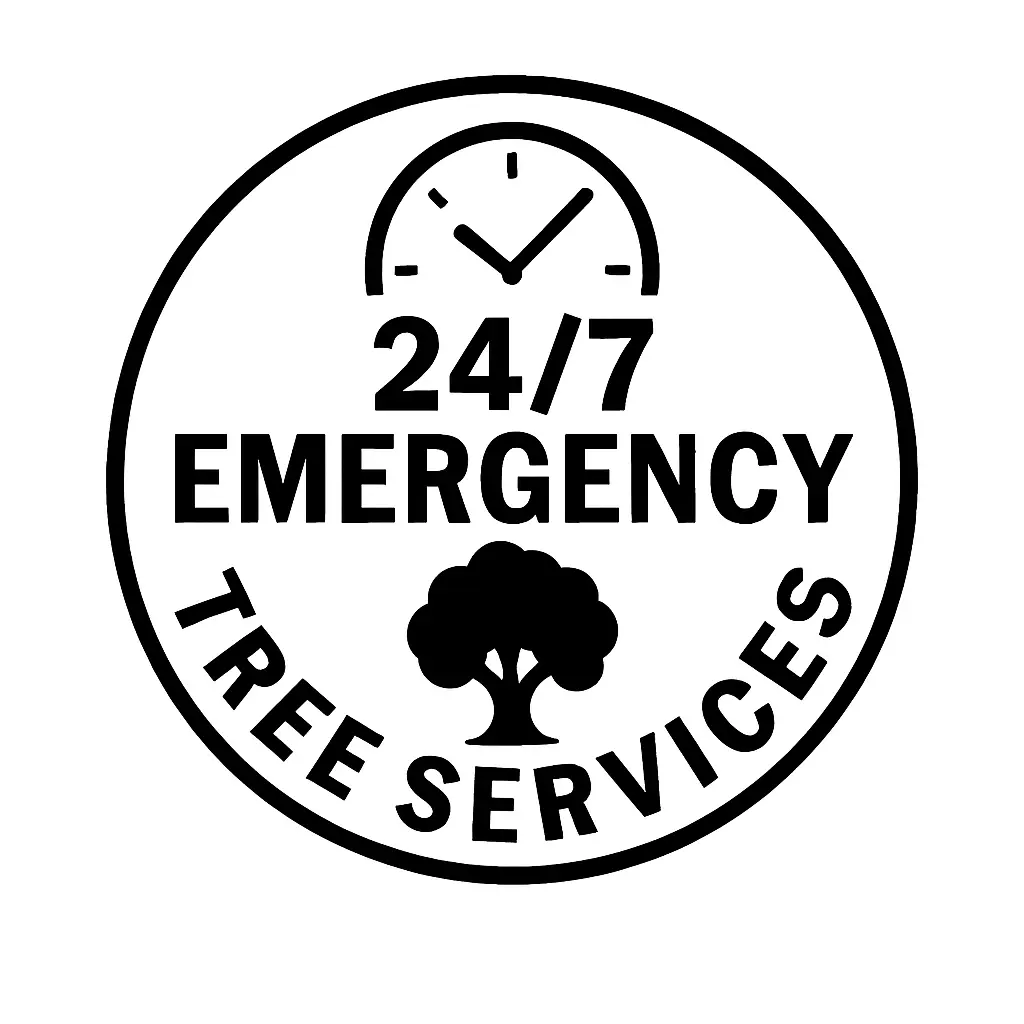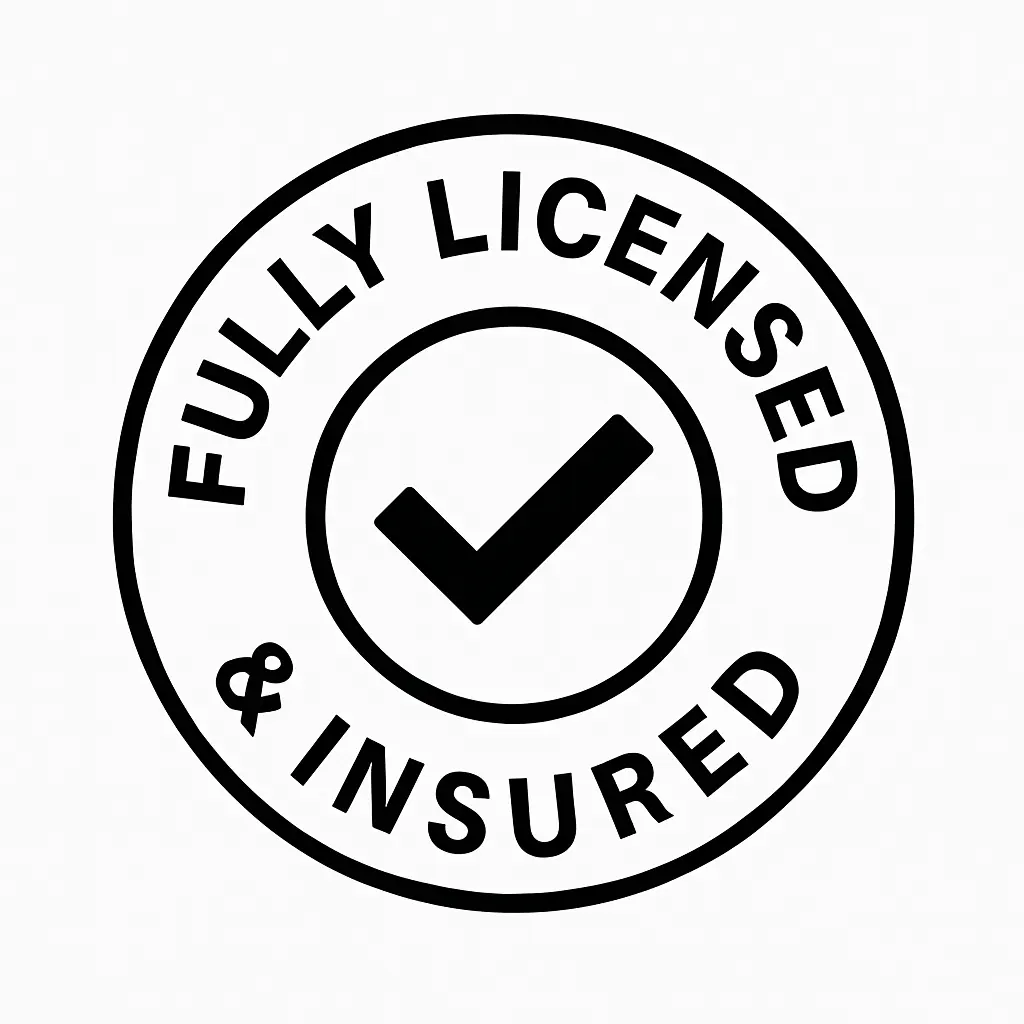Knowing the differences between a tree surgeon and an arborist is essential to choosing a tree care professional that best suits your needs. This article explores the roles, qualifications, services, and considerations associated with arborists and tree surgeons, providing valuable insights for those seeking professional tree care.
Arborist: Roles and Responsibilities
By fusing scientific understanding with hands-on expertise, arborists play a critical role in the upkeep and care of trees, preserving the health and vitality of individual trees and entire landscapes.
- Definition and Overview of the Arborist Profession: Arborists are qualified experts who concentrate on tree development, management, and general health. They are sometimes referred to as tree surgeons or tree care specialists. Their expertise extends beyond planting and maintaining trees, encompassing various aspects of tree care, disease prevention, and risk assessment.
- Specific Tasks and Responsibilities Associated with Arborists: Here is a detailed breakdown of the specific tasks and responsibilities that arborists commonly undertake:
|
Tasks |
Description |
|
Tree Pruning |
Skillful pruning to enhance tree structure and aesthetics. |
|
Tree Removal |
Safely removing diseased, damaged, or unwanted trees. |
|
Disease Diagnosis |
Identifying and treating various tree diseases. |
|
Planting and Transplanting |
Expertly planting and relocating trees for optimal growth. |
|
Tree Risk Assessment |
Assessing the dangers and safety issues related to trees. |
|
Emergency Tree Care |
Responding to storm damage, fallen trees, and other urgent situations. |
|
Tree Health Maintenance |
Implementing measures to ensure the long-term health and vigor of trees. |
- Educational Background and Training Required for Arborists: Becoming a skilled arborist requires a combination of formal education and hands-on training. Arborists typically pursue the following educational paths:
|
Education Level |
Major Fields of Study |
|
High School |
Biology, Environmental Science |
|
Associate Degree |
Arboriculture, Forestry, Horticulture |
|
Bachelor’s Degree |
Forestry, Arboriculture, Environmental Science |
|
Certification |
Arborist Certification (e.g., ISA Certified Arborist) |
In addition to formal education, arborists gain practical experience through apprenticeships and on-the-job training. This blend of theoretical knowledge and hands-on skills equips arborists to handle the diverse challenges associated with tree care.
Understanding arborists’ comprehensive roles and responsibilities and the requisite education and training is essential for those seeking professional tree care services. Tree care is approached holistically by arborists, who guarantee trees’ longevity and health in various settings.
Tree Surgeon: Roles and Responsibilities
Tree surgeons, also known as arboricultural surgeons, specialize in the physical aspects of tree care, focusing on hands-on tasks to ensure trees’ safety, aesthetics, and overall well-being in diverse settings.
- Definition and Overview of the Tree Surgeon Profession: Tree surgeons, or arboricultural surgeons, are skilled professionals dedicated to the practical aspects of tree care. Their primary responsibilities revolve around executing physical interventions, such as pruning, removal, and emergency procedures, to enhance the health and safety of trees in urban and natural environments.
|
Key Aspects |
Description |
|
Hands-On Interventions |
Execution of physical tasks like pruning and removal. |
|
Emergency Response |
Rapid response to storm damage, fallen trees, and urgent situations. |
|
Climbing and Rigging |
Skillful climbing and rigging techniques for tree work. |
|
Chainsaw Operation |
Safe and precise use of chainsaws for tree maintenance. |
|
Tree Surgery Techniques |
Specialized techniques for surgical tree care procedures. |
- Specific Tasks and Responsibilities Associated with Tree Surgeons: Below is a thorough explanation of the many duties and tasks carried out by tree surgeons:
|
Tasks |
Description |
|
Tree Pruning |
Pruning to enhance safety, aesthetics, and structure. |
|
Tree Removal |
Safe removal of diseased, damaged, or hazardous trees. |
|
Emergency Tree Care |
Immediate response to storm damage or fallen trees. |
|
Crown Reduction |
Reducing the size of the tree canopy for safety or space considerations. |
|
Tree Inspection and Assessment |
Assessing the health and stability of trees. |
|
Stump Removal |
Extracting tree stumps for landscaping purposes. |
- Educational Background and Training Required for Tree Surgeons: Becoming a proficient tree surgeon involves a combination of formal education and practical training. Tree surgeons typically pursue the following educational and training paths:
|
Education Level |
Major Fields of Study |
|
High School |
Biology, Woodworking, Agriculture |
|
Vocational Training |
Arboriculture, Forestry, Tree Surgery |
|
Certification |
Tree Surgery Certification (e.g., Arboricultural Association Certificate) |
Practical experience is paramount for tree surgeons, often gained through apprenticeships or entry-level positions in the field. The hands-on skills acquired through training complement theoretical knowledge, allowing tree surgeons to execute precise and safe tree care procedures.
Understanding the roles, tasks, and educational paths associated with tree surgeons is essential for individuals seeking hands-on solutions for tree-related challenges. Tree surgeons bring specialized expertise to the physical aspects of tree care, ensuring trees’ safety and aesthetic appeal in various environments.
Qualifications, Certifications, and Licensing
Ensuring that tree care professionals possess the right qualifications, certifications, and licenses is critical for securing reliable and competent services. This section outlines the requirements for becoming a certified arborist and the licensing and certifications associated with tree surgeons. It emphasizes the importance of these professional qualifications in the tree care industry.
- Requirements for Becoming a Certified Arborist: Achieving certification as an arborist demonstrates a commitment to excellence and proficiency in tree care. The following table outlines the key requirements for becoming a certified arborist:
|
Certification Organization |
Requirements |
|
International Society of Arboriculture (ISA) |
– Minimum of three years of full-time, practical work experience in arboriculture.<br> – Successful completion of the ISA Certified Arborist examination. |
Gaining certification from reputable organizations like ISA ensures that arborists possess a solid foundation of knowledge and experience, contributing to their credibility in the field.
- Licensing and Certifications Associated with Tree Surgeons: Tree surgeons specializing in hands-on tree care procedures may require specific licenses and certifications to ensure the safety and professionalism of their services. In New York City, there are no licenses or certifications needed as long as the tree service is insured and bonded. The table below outlines common certifications and licensing associated with tree surgeons:
|
Certification/Licensing Body |
Requirements |
|
Arboricultural Association Certificate |
– Completion of specialized training in tree surgery.<br> – Demonstrated proficiency in practical tree care procedures.<br> – Adherence to safety standards and regulations. |
Obtaining certification from recognized bodies affirms that tree surgeons have undergone specialized training, possess necessary skills, and adhere to industry standards, ensuring the safe and effective execution of tree surgery techniques.
- Importance of Professional Qualifications in the Tree Care Industry: Professional qualifications, such as certifications and licenses, are paramount in the tree care industry. The table below highlights the significance of these qualifications for both arborists and tree surgeons:
|
Aspect |
Importance |
|
Credibility and Trustworthiness |
– Certifications and licenses build trust with clients, assuring them of the professional’s competence.<br> – Credible qualifications enhance the reputation of the tree care professional and the industry as a whole. |
|
Adherence to Safety Standards |
– Qualified professionals adhere to safety protocols, minimizing risks associated with tree care procedures.<br> – Ensures compliance with industry regulations, promoting a safe working environment. |
|
Knowledge and Expertise |
– Professional qualifications demonstrate a commitment to continuous learning and staying updated on industry advancements.<br> – Certified arborists and tree surgeons have the latest knowledge and techniques for effective tree care. |
Emphasizing the importance of professional qualifications in the tree care industry reinforces the value of hiring certified and licensed professionals, contributing to the overall health and sustainability of trees in various environments.
Understanding the specific requirements and importance of professional qualifications helps consumers make informed decisions when choosing tree care services. Whether hiring an arborist or a tree surgeon, checking for certifications and licenses ensures that the chosen professional meets industry standards, ultimately benefiting the health and longevity of the trees under their care.
Scope of Work and Services
It is essential to comprehend the range of work and services arborists and tree surgeons provide to make well-informed judgments when hiring tree care experts. This section provides a comparative analysis of their respective scopes, identifies instances where hiring one professional may be more suitable than the other, and outlines considerations for specific tree-related issues and services.
- Comparative Analysis of the Scope of Work: The table below offers a comparative analysis of the scope of work for arborists and tree surgeons:
|
Aspect |
Arborists |
Tree Surgeons |
|
Tree Health Assessment |
Comprehensive assessment of tree health, including disease diagnosis and long-term care plans. |
Pay close attention to the technical aspects of tree maintenance, stressing quick fixes and cutting-edge techniques. |
|
Pruning and Maintenance |
Skilled pruning for tree structure, aesthetics, and long-term health. Long-term maintenance planning. |
Precision pruning, crown reduction, and hands-on maintenance for safety, aesthetics, and space considerations. |
|
Tree Removal and Emergency Response |
Removal of diseased, hazardous, or unwanted trees. Emergency response to fallen trees or storm damage. |
Expert removal of trees, particularly in emergencies. Immediate response to urgent tree-related incidents. |
|
Planting and Transplanting |
Expertise in proper tree planting and relocation for optimal growth. |
Limited focus on planting; more emphasis on tree removal and hands-on procedures. |
|
Tree Risk Assessment |
Evaluation of potential risks associated with trees, ensuring safety. |
Assessing and mitigating immediate risks, especially those related to compromised tree structures. |
Understanding these differences helps individuals choose the right professional based on their specific tree care needs.
- Instances Where Hiring One Professional May Be More Suitable Than the Other: The following table outlines instances where hiring either an arborist or a tree surgeon may be more suitable:
|
Scenario |
Recommended Professional |
|
Long-term tree health assessment and planning |
Arborist |
|
Immediate response to fallen trees or storm damage |
Tree Surgeon |
|
Precision pruning and maintenance for aesthetics |
Arborist |
|
Emergency tree removal due to hazard or disease |
Tree Surgeon |
|
Tree planting and relocation for optimal growth |
Arborist |
|
Assessing and mitigating immediate safety risks |
Tree Surgeon |
Tailoring the choice of professionals to the specific scenario ensures effective and targeted tree care solutions.
- Considerations for Specific Tree-Related Issues and Services: The table below presents considerations for specific tree-related issues and services:
|
Issue/Service |
Considerations |
|
Tree Disease Diagnosis and Treatment |
Arborists possess expertise in identifying diseases and planning long-term treatments. |
|
Storm Damage Assessment and Response |
Tree surgeons excel in immediate response to storm damage, ensuring safety and swift removal. |
|
Tree Pruning for Aesthetics and Structure |
Arborists bring the skills needed for precision pruning to enhance aesthetics and structure. |
|
Hazardous Tree Removal |
Tree surgeons are adept at safely and efficiently removing hazardous trees. |
|
Tree Planting and Transplanting |
Arborists specialize in proper planting and relocation techniques for optimal growth. |
Considering these factors ensures that the chosen professional can address specific tree-related issues.
Understanding the scope of work and services provided by arborists and tree surgeons and considering different scenarios empower individuals to make informed decisions regarding tree care. Whether it’s long-term health planning, emergency response, or specialized interventions, aligning the chosen professional’s expertise with the trees’ needs ensures optimal care and maintenance.
Costs and Considerations
Navigating the costs of hiring tree care professionals involves understanding the comparative expenses between arborists and surgeons. This section provides a detailed comparison, explores the factors influencing pricing in the tree care industry, emphasizes the importance of understanding value for money, and includes estimated pricing to offer a practical perspective.
- Comparison of Costs Associated with Hiring Arborists and Tree Surgeons: The table below compares the costs associated with hiring arborists and tree surgeons. These are general estimates, and actual costs may vary based on location, tree size, and specific services.
|
Service/Aspect |
Arborists (Estimated Costs) |
Tree Surgeons (Estimated Costs) |
|
Tree Health Assessment |
$200 – $500+ depending on the property size, complexity, and assessment extent. |
$150 – $350 for focused assessments and immediate issues. |
|
Pruning and Maintenance |
For extensive work or aesthetic pruning, $250 – $600 for standard pruning may go higher. |
$200 – $500, with costs varying based on the type of pruning and tree size. |
|
Tree Removal and Emergency Response |
$500 – $1,500+ for regular removals; emergency response costs may vary. |
$400 – $1,200 for removals; emergency response fees may apply in urgent situations. |
|
Planting and Transplanting |
Depending on tree size and location, $300 – $800+ for planting and transplanting. |
$200 – $500 for surgical procedures; planting costs may be lower due to less emphasis on extensive planting. |
|
Tree Risk Assessment |
$300 – $700+ for comprehensive risk assessments and mitigation planning. |
$200 – $500 for immediate risk assessments and interventions. |
These estimated costs provide a general overview, but individuals should obtain detailed quotes from professionals based on their specific circumstances.
- Factors Influencing Pricing in the Tree Care Industry: Various factors influence the pricing of tree care services. The table below outlines key factors contributing to the costs associated with hiring tree care professionals, along with considerations for estimating prices:
|
Factor |
Impact on Pricing |
Considerations for Estimating Costs |
|
Tree Size and Complexity |
Larger trees and complex procedures generally incur higher costs—estimates based on the scale of the work required. |
Consider the tree’s height, diameter, and complexity when estimating costs. Larger trees often require more labor and specialized equipment. |
|
Accessibility and Location |
Difficult-to-reach areas may involve additional costs for equipment and logistics. Consider ease of access when estimating. |
Evaluate the tree’s proximity to structures, assess potential obstacles and factor in the need for specialized equipment or climbing techniques. |
|
Urgency and Emergency Situations |
Emergency response may incur extra fees—budget for potential urgent situations when estimating costs. |
Account for the unpredictability of emergencies, and be prepared for additional fees associated with swift response and immediate interventions. |
|
Scope of Work and Services |
Comprehensive services are likely to have higher costs. Break down costs based on individual services to estimate accurately. |
Clearly define the scope of work needed. Detailed quotes for specific services, such as pruning, removal, or assessments, help understand the breakdown of costs. |
|
Professional Qualifications |
Certified professionals may charge more. Ensure that the expertise justifies the costs associated with qualifications. |
Prioritize certified professionals for specialized tasks. Their qualifications and expertise contribute to the overall quality of service, justifying potentially higher costs. |
Estimating costs based on these factors allows for better budgeting and understanding of the overall investment in tree care.
- Understanding Value for Money and Making Informed Decisions: The table below emphasizes considerations for understanding value for money and making informed decisions when hiring tree care professionals:
|
Consideration |
Importance |
|
Comprehensive Services |
Assess the range of services against the estimated costs to balance needs and budget. |
|
Professional Qualifications |
Justify higher costs for certified professionals by considering the expertise and quality of service. |
|
Reputation and Reviews |
Research the reputation of the professional or company to gauge the reliability of their services. |
|
Transparent Pricing |
Choose professionals who provide clear, detailed quotes and breakdowns to avoid hidden costs. |
|
Long-term Value |
Consider the long-term benefits of the services provided, ensuring a lasting impact on tree health and landscape aesthetics. |
Prioritizing these considerations enables individuals to assess the true value of the services and the estimated costs.
Conclusion
In conclusion, choosing between an arborist and a tree surgeon is essential for effective tree care. By understanding each profession’s roles, qualifications, services, and costs, individuals can make informed decisions tailored to their unique tree care needs. Whether it’s an arborist’s holistic expertise or a tree surgeon’s hands-on skills, this knowledge empowers individuals to maintain their trees’ health and safety confidently. Choose wisely, and your trees will thrive under the care of the right professional.





